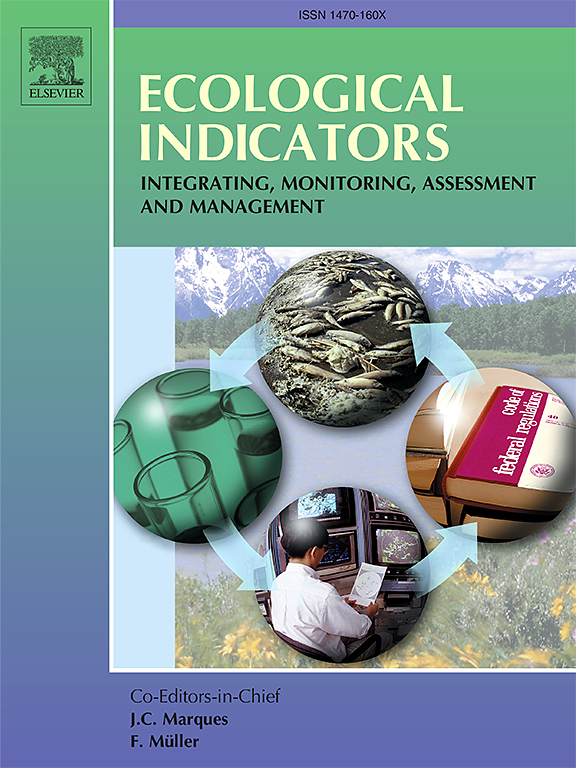Spatiotemporal evolution characteristics and driving mechanisms of wildfires in China under the context of climate change and human activities
IF 7
2区 环境科学与生态学
Q1 ENVIRONMENTAL SCIENCES
引用次数: 0
Abstract
With the ongoing global warming and frequent droughts, the threat of wildfires is also increasing. For instance, the recent wildfires in Los Angeles, California, have not only destroyed homes, including those of several billionaires and celebrities, but also resulted in multiple fatalities, drawing widespread international attention. Similarly, China, located at the same latitude as the United States but on the other side of the globe, is also facing an escalating wildfire threat. However, the current research on wildfires in China remains insufficient, particularly regarding their spatiotemporal evolution and driving factors. Therefore, this study, based on MODIS satellite data and interpretable machine learning model, systematically analyzed the spatiotemporal variations and driving forces of wildfires in China from 2001 to 2020, revealing the impacts of climate change and human activities on wildfire occurrence. The results show that: (1). Over the past two decades, the overall frequency of wildfires in China has shown an increasing trend followed by a decrease. Spatially, the frequency and intensity of wildfires were significantly higher in the eastern regions compared to the western inland areas. Temporally, wildfires were concentrated mainly in the spring season and during the daytime. Additionally, there was a notable time-lag and cumulative effect in wildfire occurrences. (2). The frequency and intensity of wildfires in China generally exhibited a high degree of consistency (R2: 0.846), although there were some discrepancies in specific regions. (3). Climate factors were the dominant drivers of wildfire occurrence in China (48 %), with temperature having a particularly significant effect. Notably, the risk of wildfires increased markedly when temperatures exceed 16 °C. (4). In addition to climate factors, human activities also played a crucial role in the occurrence of wildfires, particularly cultural traditions and festivals in China (e.g., Qingming Festival), which may significantly influence wildfire incidence. This study systematically revealed the spatiotemporal differentiation mechanism of wildfires in China under the dual influence of climate change and human activities, along with their nonlinear response patterns. The study suggests that China should prioritize the establishment of seasonal and region-specific wildfire early warning systems and strengthen fire prevention measures during high-risk periods such as spring and traditional festivals.
气候变化和人类活动背景下中国森林火灾时空演变特征及驱动机制
随着全球变暖和频繁干旱,野火的威胁也在增加。例如,最近发生在加利福尼亚州洛杉矶的山火,不仅摧毁了包括几位亿万富翁和名人在内的房屋,而且造成多人死亡,引起了国际社会的广泛关注。同样,与美国处于同一纬度但在地球另一端的中国,也面临着不断升级的野火威胁。然而,目前对中国森林火灾的研究还不够充分,特别是对其时空演变和驱动因素的研究。为此,本研究基于MODIS卫星数据和可解释机器学习模型,系统分析了2001 - 2020年中国森林火灾的时空变化特征和驱动力,揭示了气候变化和人类活动对森林火灾发生的影响。结果表明:(1)。近20年来,中国森林火灾发生频率总体呈现先增加后减少的趋势。从空间上看,东部地区野火发生频率和强度明显高于西部内陆地区。从时间上看,山火主要集中在春季和白天。此外,野火发生具有显著的时滞效应和累积效应。(2)。中国森林火灾发生频率和强度总体上具有较高的一致性(R2: 0.846),但在特定区域存在一定的差异。(3). 气候因素是中国野火发生的主要驱动因素(48%),其中温度的影响尤为显著。值得注意的是,当温度超过16°C时,野火的风险显著增加。(4)。除气候因素外,人类活动对野火的发生也起着至关重要的作用,特别是中国的文化传统和节日(如清明节),它们可能对野火的发生产生重大影响。本研究系统揭示了气候变化和人类活动双重影响下中国森林火灾时空分异机制及其非线性响应模式。该研究建议,中国应优先建立季节性和特定区域的野火预警系统,并在春季和传统节日等高风险时期加强防火措施。
本文章由计算机程序翻译,如有差异,请以英文原文为准。
求助全文
约1分钟内获得全文
求助全文
来源期刊

Ecological Indicators
环境科学-环境科学
CiteScore
11.80
自引率
8.70%
发文量
1163
审稿时长
78 days
期刊介绍:
The ultimate aim of Ecological Indicators is to integrate the monitoring and assessment of ecological and environmental indicators with management practices. The journal provides a forum for the discussion of the applied scientific development and review of traditional indicator approaches as well as for theoretical, modelling and quantitative applications such as index development. Research into the following areas will be published.
• All aspects of ecological and environmental indicators and indices.
• New indicators, and new approaches and methods for indicator development, testing and use.
• Development and modelling of indices, e.g. application of indicator suites across multiple scales and resources.
• Analysis and research of resource, system- and scale-specific indicators.
• Methods for integration of social and other valuation metrics for the production of scientifically rigorous and politically-relevant assessments using indicator-based monitoring and assessment programs.
• How research indicators can be transformed into direct application for management purposes.
• Broader assessment objectives and methods, e.g. biodiversity, biological integrity, and sustainability, through the use of indicators.
• Resource-specific indicators such as landscape, agroecosystems, forests, wetlands, etc.
 求助内容:
求助内容: 应助结果提醒方式:
应助结果提醒方式:


